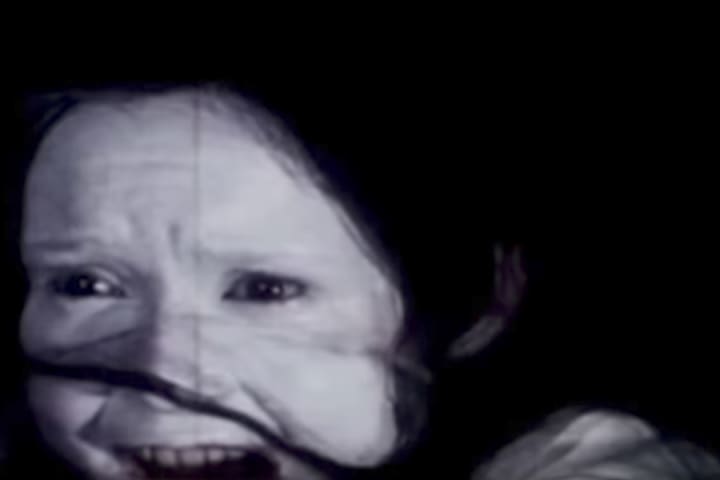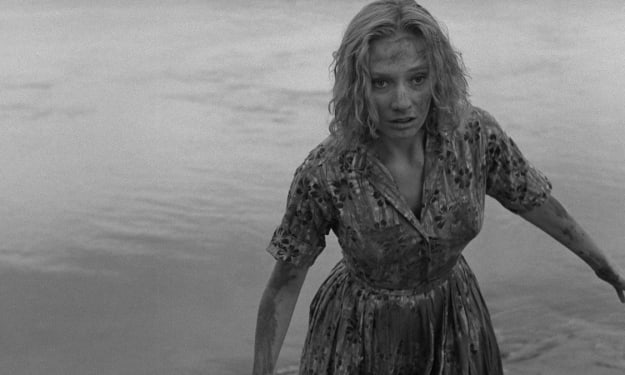
"Language is a virus from outer space."--William S. Burroughs
Fear of communication is endemic; do we chiefly fear that, somehow, if we define a thing, we take power away from ourselves? Until we label something, flesh it out with the constraints of our intellectual rigor, does it exist, really, as anything more than an inscrutable abstraction, a dream-like possibility perched forever on the edge of our awareness? The term "alphabet," which comes from the Greek "alphabetos" merely suggests a series of symbols that can be put together to formulate words; words become sentences, obviously.
You string enough of them together, you convey meaning. Meaning can be translated into action; the word becomes flesh.
Action has consequences.
The schizophrenic is known to usher forth communications that make little or no sense; word salads. The mediumistic are wont to utter oracles. William S. Burroughs was fascinated with the "cut-up" method of conveying meaning; his novels such as Nova Express, illustrate this. He once claimed to have cut in fourths a newspaper article on the Rockefellers, and come up with the cryptic phrase, "It's a bad thing to sue your own father." This later occurred. The word becomes flesh. Once defined, a thing is controlled; quantified, it cannot escape back into the flowing, psychic consciousness, the quasi-real "dream time" of possibility. It is trapped, solidified, manifested.
This is why we speak magic spells. Abra-Cadabra. (In old-fashioned occult texts, this particular word is often written in a strange, diagrammatical form, beginning with the capital A and ending with the word itself spelled out at the bottom of a sort of pyramid of letters, additional letters being added at each successive line; i.e. A, AB, ABR, ABRA, etc. This can be inscribed, for magickal purposes, and worn on an amulet.)
David Lynch began his career as a painter before progressing into short film. His first films, such as "Four Faces Getting Sick," utilized primitive animation, sculpture, and musique concrete to convey an impression of the grotesque and alarming. They were not films made to convey a traditional or even a non-linear narrative. They were abstractions on a theme, used to evoke mystification and disgust, in a state beyond language.
The Alphabet, made in 1968, and inspired by the nightmare of a child, one of Lynch's relatives if I correctly remember, who swam up from the churning sea of nightmare invoking, "ABC! ABC! ABC!" Apparently, the young girl thrashed about repeatedly, speaking the three first letters of the alphabet over and over again, as if to convey a hidden message, an inscrutable code.
Inspired by this, Lynch made the cartoon. Live-action images are mixed, here and there, with strange diagrammatical structures that draw themselves; there is a feeling that what he is attempting to convey here is a sort of organic process from an alternate world; perhaps a way for the mind, untethered from reason and the shackles of a language or label, trying to quantify and make sense of its own processes.
But, how should we describe this strange, small film, this advertisement for the horrors of language? A woman, the dreamer, is lying in bed, the incessant chant of "abc...abc...abc..." by children heard over her image as the darkness reveals her. Next, we see a cartoon window and a sun; the weird, box-like structure below forms itself out of animated lines. There is strange, operatic singing (which, incidentally, follows the melody of "do re mi fa so la ti do"; in other words, another code imposing structure on the naturally occurring pattern). Blots of shading paint themselves over this. There are letters hooked to the structure.

A ball shoots up a tube or tunnel, the sun giving birth perhaps. A is seen framed under the window, which has grown dark. It is on a horizontal line with a little flower. A could (semen?) issues forth, and it gives birth to little baby a's.
The drawings themselves are unexceptional; the sorts of things a talented, careful child might draw in a notebook. We see an abstraction that is somehow also organic; head and shoulders wearing a tie formulate. The physical process, "defined" by language, " has been quantified and made as grotesque as the chart in a medical text; or a butcher's shop. At one point the image seems to formulate the shape of a penis; the flower on the line in the preceding scene might suggest pollination.
Birth, impregnation, and stricture of the living by the deadness of meaning. The living state of being-ness is beyond language; language is worse than a virus. It's a mutilator, a destroyer of the free flow of possibility. Understanding and comprehension of the incomprehensible relegate spiritual experience a victim of quantum murder. Once a thing is defined, it can be dealt with, dealt out; erased.
A mouth has appeared in a circle, divided by lines, moaning in a weird, dragging effect that is like a warped recording. Lips appear again with the message, "Remember we are dealing with the human form!" These images could almost have been lifted from a children's television program, were it not for the eerie, hissing steam or wind on the soundtrack that is so unnerving.
Most disturbing, the flat, female facial features pressed against an abstract shape, with an eye that is carved or segmented by a crescent cut, the rest of the features also seemingly distorted and conveying an image of pain or abuse of the face, the "flesh become Word." It's a striking, hideous image, the battered face of language's slave, passive in resignation. The head dissolves into streaks of blood.
Against a black void, a succession of images of the dreamer (Peggy Lynch) reaching out for floating A's and B's and C's while lying in bed, her face a ghostly white mask, her eyes wild and alive in the closer she comes to us, suggests not only the impregnated nowhere of the undefined state beyond words, and the fact that she knows, intuitively, that this is a game; language is, finally, simply an artificial construction, no more real than the dark void in which her bed is being buffeted wildly.
We hear her voice intone the alphabet in a sing-song fashion.
The final scene shows her writhe up from her nightmare, vomiting a gush of blood on the white sheets.
The Alphabet is like a short educational film, but one wherein the lesson itself is infinitely distorted, garbled; but for that reason perhaps, one infinitely more honest. It's an interesting glimpse into the mind of a legendary auteur, long before his cinematic language was ever, for the world, defined.
The Alphabet is available for free viewing at YouTube.
About the Creator
Tom Baker
Author of Haunted Indianapolis, Indiana Ghost Folklore, Midwest Maniacs, Midwest UFOs and Beyond, Scary Urban Legends, 50 Famous Fables and Folk Tales, and Notorious Crimes of the Upper Midwest.: http://tombakerbooks.weebly.com






Comments
There are no comments for this story
Be the first to respond and start the conversation.